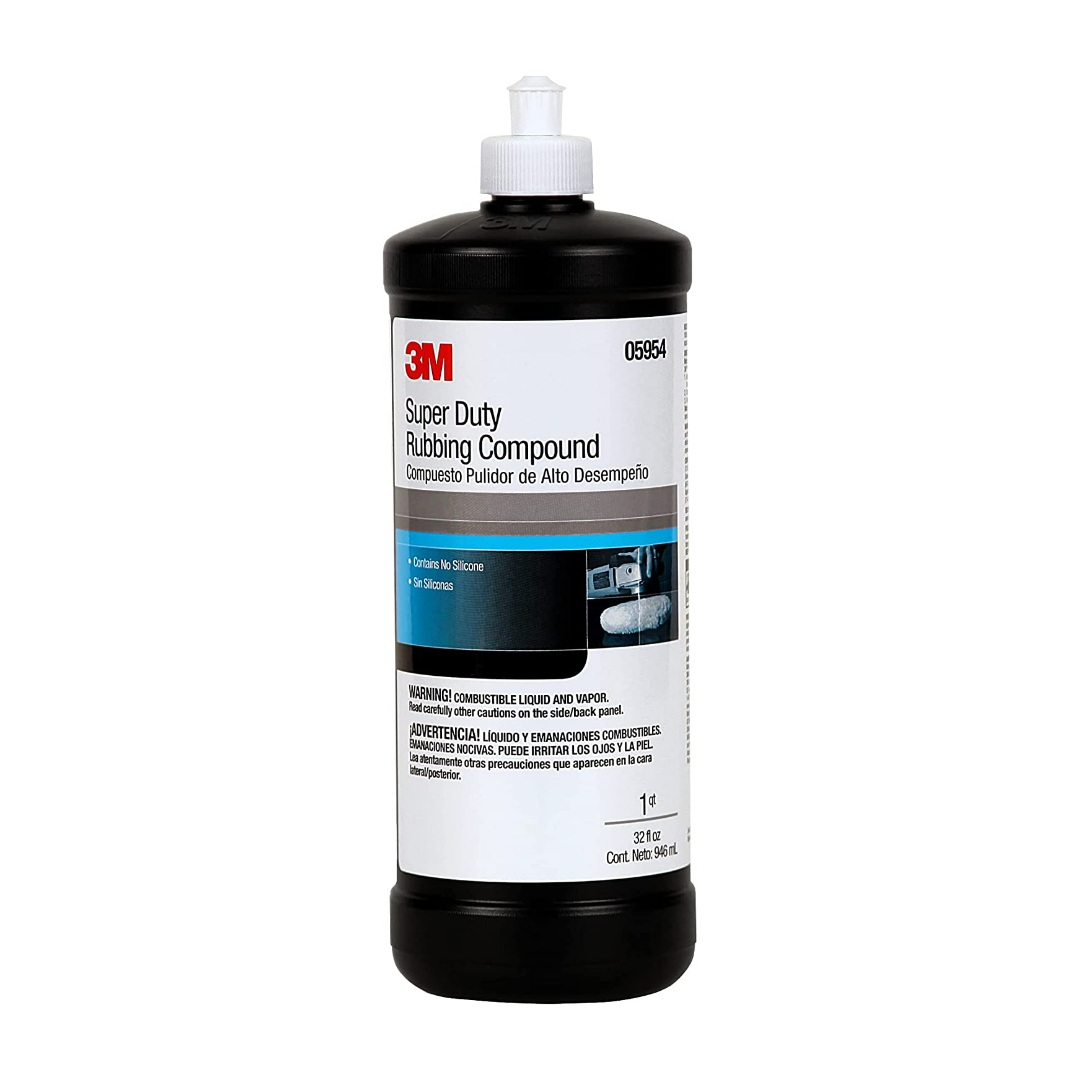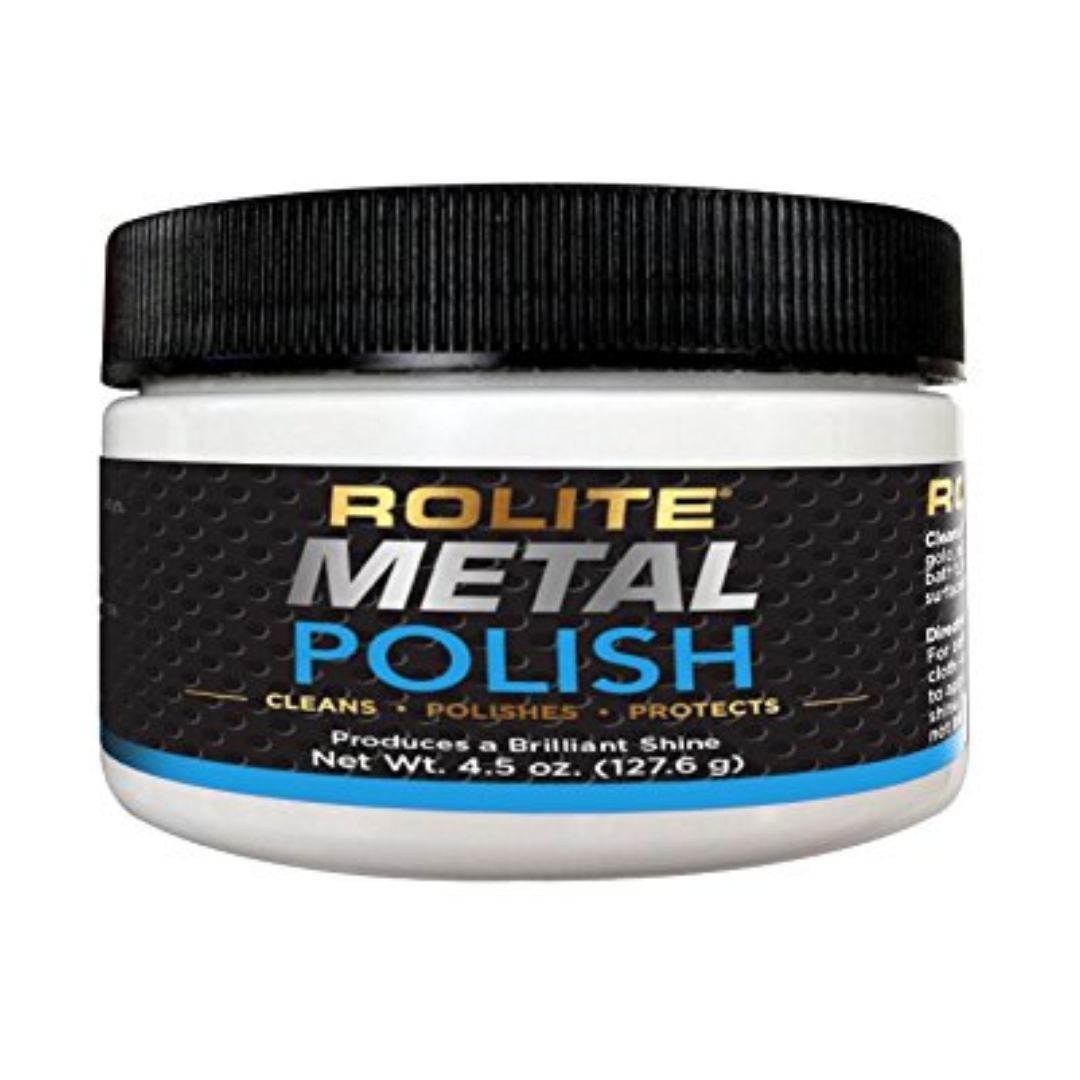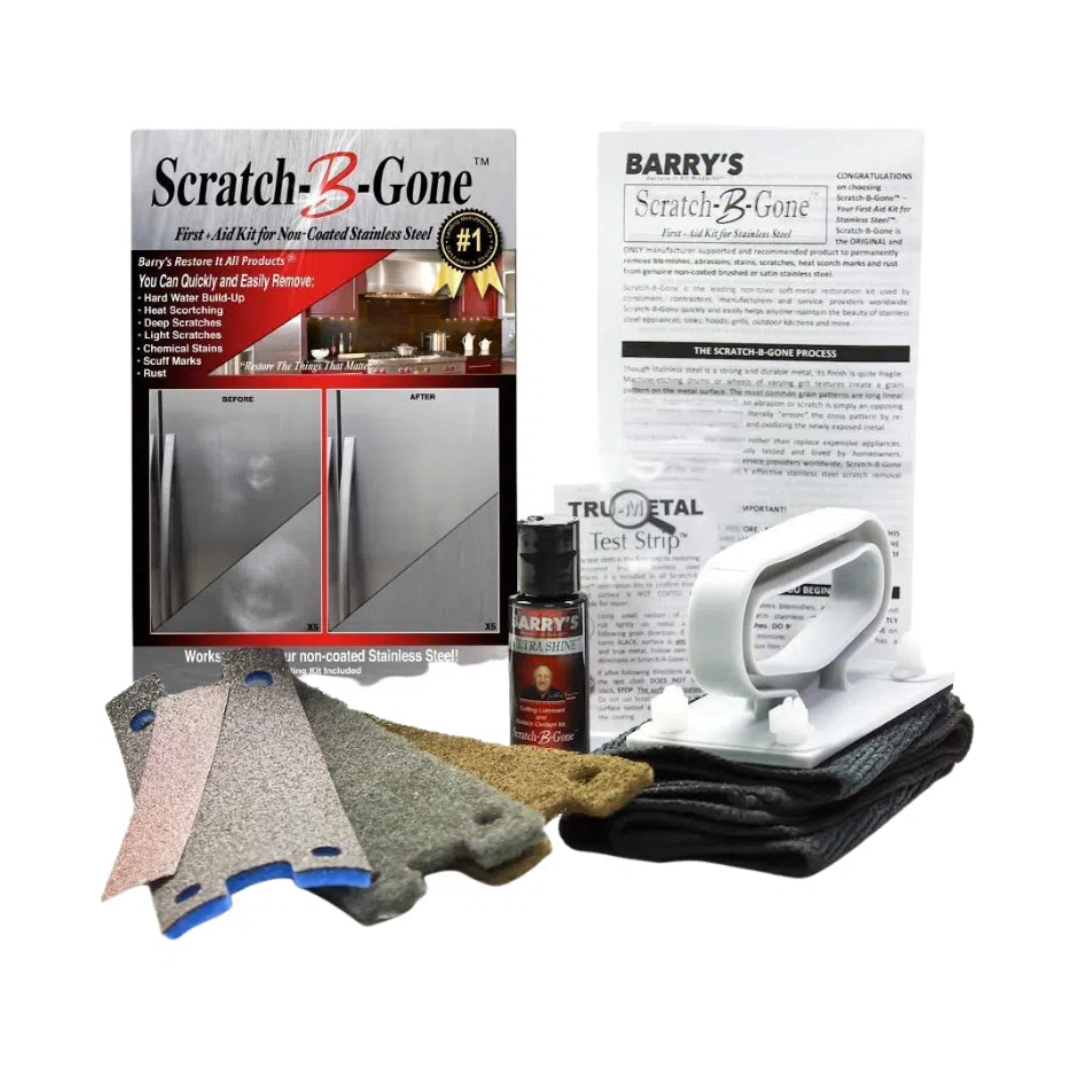Many modern appliances, including dishwashers, refrigerators, range hoods, and toaster ovens, come with sleek stainless steel finishes. But while the material may be “stainless,” it isn’t completely scratch-proof, and after years of wear and tear, it can start to look a little dull.
The good news is that it’s not difficult to restore stainless-steel surfaces to their former glory, especially if you have the right materials and products.
Here’s how to get scratches out of stainless steel and few of our favorite scratch repair products.
Top Stainless Steel Repair Products
Assess the Damage and Gather the Materials
Are you dealing with light, minor scuffs or deeper, visible scratches? Depending on the condition your stainless steel is in, your approach will be different.
What You Need for Small Scratches
For fine scratches and less significant nicks and dings, all you need is a non-abrasive, stainless-steel scratch remover compound, which will work to fill in the fine lines and smooth out the surface.
There are effective products on the market made just for this purpose, such as 3M Super Duty Rubbing Compound, Bar Keepers Friend, and Rolite Metal Polish. You can also try common household products, such as non-gel toothpaste or baking soda. In addition, you’ll need several microfiber cloths for applying and removing the compound.
What You Need for Deep Scratches
For tougher scratches, it may be necessary to rub them out with an abrasive pad. You’ll need a scouring pad or scrubbing sponge, plus some cooking oil (olive oil works well). There are also kits on the market, such as Rejuvenate Stainless Steel Scratch Eraser Kit and Scratch-B-Gone, which contain all you’ll need to remove deeper scratches.
Keep in mind, however, that this technique should only be used on uncoated stainless steel; if the metal has a protective clear coating or synthetic surface, you’ll end up doing more harm than good. Check to see what you have in your owner’s manual.
Determine the Direction of the Grain
No matter how deep the scratch you’re trying to erase, you’ll want to work with the grain of the stainless steel. Take a close look at the metal and you’ll see very fine brush lines going either side to side or up and down.
Follow these lines while you’re working; don’t rub perpendicular to them or in a circular motion. Going against the grain can actually cause more damage to a stainless-steel surface.
How To Fill In Small Scratches
If you’re dealing with light scratches, start by preparing the non-abrasive compound. Some come in powder form, which you will then combine with water to form a paste at home. Others scratch removal compounds come as pre-mixed, ready-to-use pastes.
You can also use common household products as DIY scratch removers. For instance, you can apply gel-free toothpaste right out of the tube, or create a paste by mixing baking soda with water.
Once you have your scratch buffing product, proceed with scratch removal process by following these steps:
- Make sure the surface is completely clean of dirt, dust, and food particles.
- Then dab a small amount of the compound onto a clean cloth and rub it continuously over the scratch. Work gently, and in the same direction as the grain.
- After a few minutes, use a fresh, damp cloth to wipe the compound off and examine your progress. If necessary, polish again with more compound until the desired results are achieved.
- Wipe the excess compound off with the moistened cloth and use a fresh one to dry the surface.
How To Buff Out Big Scratches
If applying compound doesn’t work, or if you can tell right off the bat that the blemishes you’re dealing with require a more aggressive tactic, it’s time to break out the scouring pad.
- Apply a couple of drops of oil to the pad, and use a firm, moderate pressure to buff the surface, always working with the grain.
- Work in a slightly larger area than just the scratch to achieve a more uniform appearance.
- Examine your efforts and repeat if necessary. When you’re happy with the results, remove the excess oil by buffing the same area with a clean, non-damp microfiber cloth.
How To Prevent Scratches
While the steps above will help you eliminate scratches on your stainless steel kitchen appliances and surfaces, you can also take steps to stop the scratches from occurring in the first place.
Here are some easy tips for preventing scratches on stainless steel before they start.
- Don’t chop or cut foods directly on stainless steel counters or stovetops. Instead, use a cutting board.
- Clean stainless steel in the direction of the grain, just like you would when repairing scratches.
- Dry and buff out your stainless steel surfaces after you use them to help prevent the buildup of mineral deposits.
- Avoid putting hot pots and pans in stainless steel sinks. Also, avoid putting items such as paint stripping agents, brush cleaners, metal shavings, and adhesives into your sink.
- Don’t use harsh cleaners such as ammonia or chlorine bleach; and avoid hard scrubbing pads.
- If your home has hard water, use a quality water softener before cleaning your items.
- When you have dirt, grime, or fingerprints on your stainless steel, clean them right away. The longer you wait, the more likely you will have to use harsh cleaning products to remove them, which could cause long-term damage to the surface.
- Buy appliances with a fingerprint-resistant or scratch-resistant surface to help them remain pristine.
Stainless Steel Scratch Removers We Love
If you have stainless steel surfaces in your home, keeping these products on hand is smart so you can act quickly when a scratch appears.
Frequently Asked Questions About Stainless Steel Scratch Repair
Does toothpaste work for removing scratches?
Non-gel toothpaste can be used to remove scratches from stainless steel if you don’t have a stainless steel cleaner available. Dab a small amount of non-gel whitening toothpaste onto the scratch and rub in a circular, even motion.
Toothpaste can also be effective at removing scratches from glass.
Does WD-40 remove scratches from stainless steel?
In addition to toothpaste and baking soda, another household item you can use in a pinch to remove scratches is WD-40. Spray a small amount of WD-40 on a microfiber cloth and use that cloth to wipe the scratch. WD-40 can also help restore shine to your stainless steel appliances but be careful not to use too much at once.
What type of sandpaper is best for wiping down scratches?
Sandpaper can be an effective tool for deep scratches, but you should only use fine-grit sandpaper (around 400 is sufficient) that has been soaked in water.
When using sandpaper, don’t rub it in a circle or go against the grain. Fine-grit sandpaper is also useful to have on hand when you have hardwood floor scratches.




